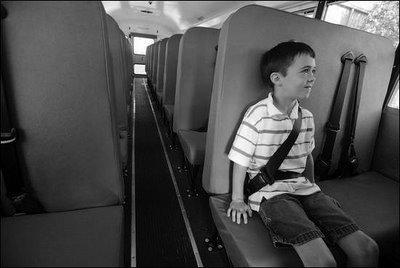Last November, the National Highway Traffic Safety Administration (NHTSA) recommended for the first time that seat belts be added to school buses. However, according to WAPT News, an ABC affiliate, to date, only six states actually require seat belts on fullsized buses. It is unacceptable that delays in implementation of seat belts on school buses have been allowed.
Studies directly prove that the use of seat belts is correlated with maximized safety. A joint study by ABC and IMMI, a safety advocacy group, found that when lap and shoulder seat belts were installed, they reduced injury by as much as 50 percent. Considering that in real scenarios, students, not crash dummies, are the test subjects, the price of human life is high in any given school bus.
Moreover, most of America’s youth already know how to use a seat belt from being driven by their parents. It would be second nature to them to use seat belts on a school bus. In the case of an accident, students would simply know to click and unfasten their seat belts to escape the vehicle.
The main reason why school buses do not already have seat belts is that regulators contend that buses are foolproof, designed to protect students in a cocoon-like fashion. But even the most thought-out, meticulous designs are susceptible to error, especially if they assume there are only two kids per seat.
The American Automobile Association reports that hundreds of crashes happen annually in most states. If seat belts in cars save lives, why shouldn’t they serve the same purpose in school buses?
Opponents cite the high cost for states to install seat belts in buses, with experts estimating that it would cost $12,000 per bus. However, that is the reason why action should be taken now, gradually, and funded at the federal level. If these measures are delayed for years, they instead risk being enacted by a federal mandate, under which states and school districts would have to fend for themselves.
“That’s the big fear by everybody. If you don’t start phasing it in over time, school districts won’t get to [use] school buses unless they have seat belts on them,” Washington Representative Tom Miles told WAPT.
The idea that school buses would not be accessible at all to students in the future is enough to push the seat belt measure ahead. There is no harm in taking extra precaution to protect the lives of students on the road – a safety net should be a necessity, not a last resort.
The cost of implementation should never be held in higher regard than the cost of human life.


